INTERNATIONAL DAY OF CLEAN ENERGY
By Alyssa Jairam
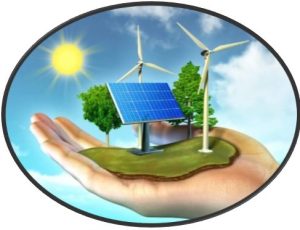
1.0 Introduction: Celebration of International Day of Clean Energy and It’s Significance.
International Day of Clean Energy is observed annually on 26th January and aims to bring awareness and commitments to fostering a cleaner, greener and more sustainable future for generations to come (United Nations, 2023). In an era where the global community faces various environmental challenges, the need for sustainable solutions is increasing and the International Day of Clean Energy was declared in 2009 by the United Nations as a beacon of hope and a catalyst for change (IRENA, 2023).
International Day of Clean Energy serves as a reminder of the pivotal role that clean and renewable energy sources play in addressing the issues of climate change, environmental degradation and energy security. Due to our dependence on fossil fuels and the environmental consequences associated with generating energy from fossil fuels, we must discover alternatives to reduce carbon emissions into the atmosphere. Therefore, International Day of Clean Energy serves as a platform for global collaboration and the exchange of ideas, innovations and best practices in the pursuit of clean energy solutions.
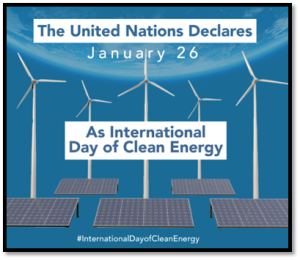
2.0 Historical Evolution and the Importance of Clean Energy.
2.1 Is ‘Clean Energy’ really clean?
Clean energy comes from generation systems that do not produce any kind of pollution, notably greenhouse gases like CO2 which cause climate change. Clean energy and renewable energy are two concepts that are bundled together, however, they are not the same. All clean energy sources are considered clean however, not all renewable energy sources are clean. For instance, burning wood from a sustainably managed forest is a renewable energy source however, it is not considered ‘Clean Energy’ due to the release of carbon dioxide into the atmosphere during the combustion stage.
In order for energy to be truly clean, the production and storage of carbon needs to be zero. Clean energy therefore refers to energy that comes from renewable, zero emission sources that do not pollute the atmosphere when utilised in addition to energy saved from the implementation of energy efficiency measures (TWI, 2023).
2.2 How Does Clean Energy Work and Why Is It Important?
Clean energy works by producing power without having any negative impacts on the environment such as the release of greenhouse gases like carbon dioxide. Since a lot of clean energy is also renewable, for example, solar, wind and some hydro resources, the main aspect of clean energy are the environmental benefits as part of a global energy future.
Clean energy is important for the following reasons (TWI, 2023):
- Preservation of natural resources.
- Reduction in environmental disasters such as fuel spills or problems associated with natural gas leaks.
- Creation of reliable power sources to enhance the energy security and ensure that our energy demands are met.
- Reduction in air pollution due to little to no carbon dioxide emissions into the atmosphere.
- Reduction in the dependence on imported fuels for power generation.
- Cost saving as there is no need to extract and transport fuels since the resources replenish themselves naturally.
- Employment in the developing, manufacturing, installation and maintenance of the technologies.
From mitigating climate change and reducing greenhouse gas emissions to fostering economic development and enhancing energy security, the benefits associated with clean energy are multifaceted and through the observance of the International Day of Clean Energy, we are able to reflect on the importance and advantages of clean energy while emphasizing the positive impacts on the environment, society and the global economy.
Throughout the years, advancements in technology, policy initiatives and the increasing awareness of environmental issues have propelled clean energy initiatives. Nations, businesses and individuals worldwide are recognizing the importance of transitioning towards clean energy sources which not only reduce our carbon footprints but also promote economic growth and social equity.
3.0 Top 3 Cleanest Energy Sources.
The top three (3) sources of clean energy are:
- Solar Energy
- Wind Energy
- Hydroelectric Energy
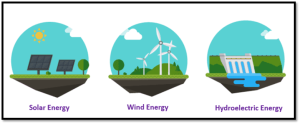
3.1 Solar Energy
Solar energy is a renewable resource and refers to any type of energy that is generated by the Sun and can be harnessed directly or indirectly for human use. Solar Energy can be obtained almost anywhere on Earth and solar technologies are scalable which permits application on a small-scale (for powering a single household) or on a large-scale (for industrial or commercial use). The use of solar energy therefore reduces environmental impacts and our dependence on fossil fuels for power generation.
In order to harness energy from the Sun, solar panels are used. A solar panel or Photovoltaic (PV) panel is a piece of equipment that converts sunlight into electricity via several solar cells known as PV cells. Solar panels are usually made from silicon or another semi-conductor material that is installed in a metal frame with a glass casing so that when the material is exposed to photons of sunlight (which are small packets of energy), electrons will be released to produce an electric charge. This PV charge produces an electric current in the form of Direct Current (DC) which is then converted to Alternating Current (AC) via an inverter (National Gird, 2023). This Alternating Current (AC) is what we use in our daily lives to power household appliances such as refrigerators, air conditioners, water heaters, fans, televisions, lighting etc. (Refer to Figure 3).
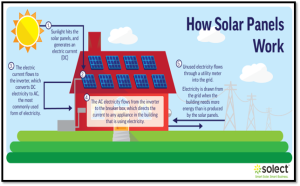
3.2 Wind Energy
Wind Energy or Wind Power is a form of clean and renewable energy that uses the wind to generate mechanical power or electricity. This is achieved using wind turbines which collect the wind’s energy when the blades rotate. The kinetic energy which is caused by the moving air as the blades rotate, is converted into electrical energy via a generator. The generator produces the electricity while a transformer converts that electricity to an appropriate voltage which can then be stored or transported to the grid for distribution to homes and businesses (Wind Exchange, 2023).

3.3 Hydroelectric Energy
Hydroelectric energy is commonly referred to as ‘Hydroelectric Power’ or ‘Hydroelectricity’ and is a form of energy that harnesses the power of water in motion. For example, water which flows over a waterfall (National Geographic, 2023).
Most hydroelectric energy plants have a reservoir of water, a gate or valve to control how much water flows out of the reservoir and an outlet or area where the water ends up after flowing downward. The water gains potential energy just before it spills over the top of a dam or flows down, and this potential energy is converted into kinetic energy as the water flows downhill. The water can be used to turn the blades of a turbine to generate electricity which can then be distributed for domestic, commercial and industrial use (National Geographic, 2023).
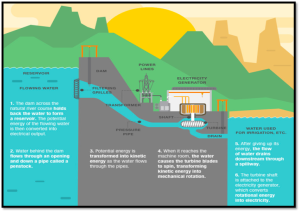
4.0 Clean Energy Projects Worldwide.
1) United States: The Solar Star solar farm is the largest solar farm in USA and one of the biggest worldwide. Work on this solar plant began in June 2015 and consists of 1.7 million solar panels distributed across 13 square kilometers in Los Angeles and Kern counties in California. The farm was built in two projects: Solar Star 1 with a capacity of 314MW and Solar Star 2 with a capacity of 265MW. The total energy generation is about 579MW which is enough to power 255,000 homes. Additionally, the panels in the farm use a single-axis tracker to follow the sun’s trajectory, meaning that they create 25% more energy as compared to panels that are mounted in a fixed position. Hence, at all times throughout the day, the solar panels are at the best angle for capturing sunlight for energy generation (Kilgore, 2023).
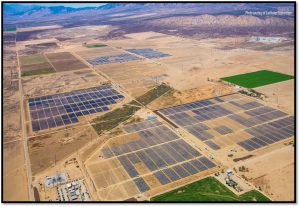
2) Trinidad and Tobago: The solar park at the Piarco International Airport is located 30km east of Downtown Port-of-Spain, in the suburban town of Piarco. This project is ongoing and will consist of ground-mounted solar panels that are installed over an area of 1.54ha with an annual generation capacity of 1,443,830KWh which is projected to represent 7.1% of the total electricity consumed at the airport. Additionally, the construction of this solar project aims at reducing yearly carbon dioxide emissions by 1,010 metric tonnes and to decrease Trinidad and Tobago’s overall carbon footprint (Ministry of Planning and Development Trinidad and Tobago, 2023).
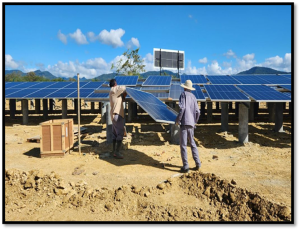
3) The Netherlands: The offshore wind farm Borssele III and IV is located 22km off the coast of the Province of Zeeland in the Netherlands and is one of the largest offshore Dutch wind farms. This wind farm began operations in February 2021 and consists of 77 wind turbines that were installed over a period of only 6 months with a generating capacity of 731.5MW which supplies sustainable energy to 825,000 households. The construction of this wind farm made an important contribution to the Dutch climate objectives (Vanoord, 2023).
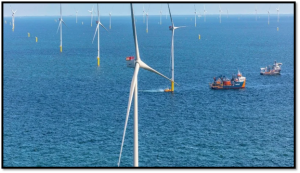
4) China: The Three Gorges Dam on the Yangtze River is a hydroelectric gravity dam and one of the world’s largest power stations. This dam generates approximately 95 TWh of electricity annually depending on the amount of precipitation in the river basin. Following the extensive monsoon rainfalls in 2020, the dam’s annual production reached nearly 112 TWh which broke the previous world record of about 103 TWh that was set by the Itaipu Dam in 2016 (Britannica, 2023). Additionally, the Three Gorges Dam not only generates clean energy but also provides flood control and improves navigation which showcases the multifaceted benefits of sustainable energy solutions.
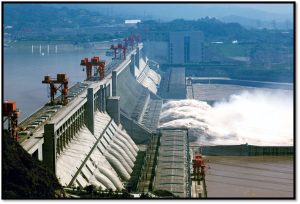
5.0 Conclusion
In commemoration of International Day of Clean Energy, let us celebrate the achievements made thus far in the field of clean energy while acknowledging the work that still lies ahead. On this day, let us reflect on the power of collaboration, innovation and individual actions to shape a world that promotes clean energy to create a planet that thrives and sustains and so that we can leave a legacy of environmental stewardship for future generations.
References
- “Constructing One of The Largest Offshore Wind Farms In The Netherlands.” 2023. Retrieved from Vanoord.com: https://www.vanoord.com/en/projects/constructing-one-largest-offshore-wind-farms-netherlands/
- “How Do Wind Turbines Work?” 2023. Retrieved from Energy.gov: https://www.energy.gov/eere/wind/how-do-wind-turbines-work#
- “How Does Solar Power Work?” 2023. Retrieved from NationalGrid.com: https://www.nationalgrid.com/stories/energy-explained/how-does-solar-power-work#
- “Hydroelectric Energy.” 2023. Retrieved from National Geographic: https://education.nationalgeographic.org/resource/hydroelectric-energy/
- Kilgore, Georgette. 2023. “Largest Solar Farm in USA, Largest in Each State, & Largest in Every Country.” Retrieved from EightBillionTrees.com: https://8billiontrees.com/solar-panels/largest-solar-farm/#
- “Renewable Energy.” 2023. Retrieved from BYJUS.com: https://byjus.com/physics/renewable-energy/
- “Shell-Led Dutch Wind Farm Delivers First Electricity.” 2023. Retrieved from Reuters: https://www.reuters.com/business/energy/shell-led-dutch-wind-farm-delivers-first-electricity-2023-06-19/#
- “Three Gorges Dam.” 2023. Retrieved from Britannica: https://www.britannica.com/topic/Three-Gorges-Dam
- “Three Main Sources of Clean Energy.” 2021. Retrieved from StarEnergyPartners.com: https://www.starenergypartners.com/blog/electricity-company/3-main-sources-clean-energy/#
- “UN Declares IRENA’s Founding Date as International Day of Clean Energy.” 2023. Retrieved from IRENA.org: https://www.irena.org/News/pressreleases/2023/Aug/UN-Declares-IRENAs-Founding-Date-as-International-Day-for-Clean-Energy#
- Vartan, Starre. 2021. “What Is Wind Energy? Definition and How It Works.” Retrieved from Treehugger: https://www.treehugger.com/what-is-wind-energy-5097217
- “What Is Clean Energy? How Does It Work? Why Is It So Important?” 2023. Retrieved from TWIGlobal.com: https://www.twi-global.com/technical-knowledge/faqs/clean-energy
- “What Is Wind Power?” 2023. Retrieved from Wind Exchange: https://windexchange.energy.gov/what-is-wind#
- “Wind Explained: Electricity Generation From Wind.” 2023. Retrieved from U.S. Energy Information Administration (EIA): https://www.eia.gov/energyexplained/wind/electricity-generation-from-wind.php#
